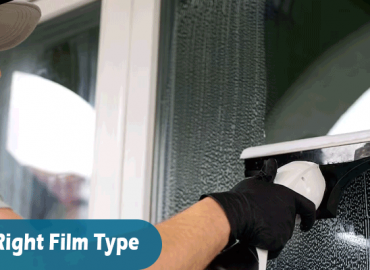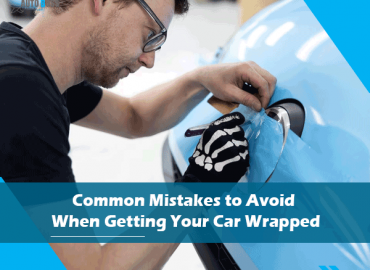Are you looking for a way to keep your vehicle looking and feeling great? You might have heard about film and ceramic coating as protective measures and are trying to decide between the two. After all, making the right choice between these two can save you time, effort, and money in the long run.
That’s why we’re here. In this article, we’ll walk you through the main differences between film and ceramic coatings when it comes to protecting your paint job. We’ll also talk about their respective pros and cons so that you can make an informed decision about which coating is best for you and your vehicle. So let’s get started.
What Is Paint Protection Film (PPF) Coating?
You know it’s important to keep your vehicle looking its best, but what’s the difference between film coating and ceramic coating? Paint Protection Film or Ceramic Coating is a way of protecting your vehicle’s paint from scratches, chips, and other wear and tear.
Think of it like a protective layer that sits on top of your vehicle’s paint job—an invisible, durable shield that guards against dirt, debris, water, and UV rays. It looks like regular car paint, so no one will be able to tell if you have PPF installed on your car.
The main advantage of film coating37 is that it keeps your vehicle looking cleaner for longer than traditional car washes. It’s also relatively easy to install yourself. Plus, once you install the film coating, you don’t need to worry about maintaining it beyond occasional wipe-downs with a damp cloth. That said, some people find it difficult to apply without professional help. So definitely consider getting help if you decide to go with this option.
The Pros and Cons of Paint Protection Film Coating
If you’re looking for a fast, effortless way to protect your car’s paint job, then paint protection film (PPF) coating might be a great choice. It’s an optically clear urethane film that is applied directly to your vehicle with a special adhesive.
Here are some of the pros and cons of PPF coating:
Pros:
- Increased scratch resistance and protection against stone chips
- Can easily be removed and replaced
- UV resistant, helping to keep your car’s color vibrant for longer
- Overlapping the film adds more protection against scratches and chips
- Can help preserve your car’s resale value by preventing paint fade
Cons:
- The cost of installation can be pricey, especially if the film needs to cover a large area of the vehicle
- Because it’s a thin protective layer if it isn’t taken care of or maintained properly. It can cloud or delaminate over time
- Depending on its thickness and the type of adhesive used. It may not protect against all types of debris or contact damage.
What Is Ceramic Coating?
Are you curious about what ceramic coating is? It’s a liquid polymer that you can apply to your car to protect its paint and finish. Unlike film coating, ceramic coatings are applied in thin, nanometer-thick layers and form a chemical bond with the paint.
Ceramic coatings deliver several advantages over traditional film coating products:
Benefits of Ceramic Coating
- Ceramic coatings are designed to protect your vehicle from airborne contaminants and chemicals. Like brake dust, tree sap, bird droppings, dirt, dust, and other debris. Plus, the hydrophobic properties of these coatings make it easier to clean off these contaminants so your vehicle looks glossy and new.
- Ceramic coatings have a long lifespan of up to 5 years or more. Your car’s care will determine how long it lasts. Which is much longer than that of film-coating products.
- Scratch Resistance. The ceramic particles bond with the paint layer and create a harder surface. That is resistant to light scratches or abrasions that may occur while washing or waxing your car.
- UV Protection. The coating helps to reduce oxidation from the sun’s rays so your vehicle won’t fade as quickly compared to unprotected vehicles.
Ceramic coating for your car: benefits
One of the best benefits of ceramic coating for your vehicle is the level of protection it offers. It creates a hydrophobic barrier that resists dirt, dust, and other contaminants. While also repelling water. Ceramic coating also helps protect against UV rays and helps keep your car looking like new for longer.
It also provides superior gloss to paint and is much more durable than waxing or using other sealants. Waxes and sealants wear away with time and will eventually need to be reapplied. Whereas ceramic coating can last years without needing any maintenance. The durability of ceramic coating makes it a great choice for anyone looking for long-term protection for their car’s paint job.
Ceramic coating is also relatively easy to apply. Provided you follow the instructions carefully. You will need to clean your car prior to application as well as use special cleaners and microfiber towels designed specifically for ceramic-coated surfaces. There are even DIY kits available if you’re up for the challenge of applying it yourself at home.
Overall, ceramic coating is an excellent choice if you’re looking for superior protection with long-lasting results. Just make sure you take the necessary steps to properly maintain your coated car so you get maximum value from it.
Film vs. Ceramic Coating : Which One Should You Choose?
So, you’ve done your research, and now you’re ready to make a decision – film coating or ceramic coating? Here’s what you need to know when it comes to weighing the pros and cons of each one.
Film Coating
Film coatings are typically more affordable, but they also don’t last as long as ceramic coatings. Furthermore, they often require more maintenance since the film coating can deteriorate more easily. The good news is that film coatings are easier to apply than ceramic coatings. That means less time in the shop and off the road for you.
Ceramic Coating
Ceramic coatings are tougher than film coatings because the material is much harder and it’s designed to last longer. Up to 5 years or even longer with proper care. They also offer better protection from UV rays, water spots, dirt, and grime buildup, plus staining from gasoline spills. The downside is that ceramic coatings cost more than film coatings and they can take longer to apply in your auto shop. But they do end up being worth the investment in the long run.
At the end of the day, it all comes down to what works best for your vehicle and your budget. Film coating might be right for casual drivers who don’t use their cars too often. While those who drive a lot might benefit most from ceramic coating due to its durability and protection capabilities over time.
Conclusion
In the end, the best ceramic coating for your vehicle will depend on your budget, priorities, and the amount of maintenance you are willing to commit to. Film coatings offer good protection and easy maintenance, while ceramic coatings offer outstanding protection that requires more maintenance. Whatever option you choose, it’s important to do your research, read reviews, and make sure you select the coating that will best fit your needs.
Keeping your vehicle protected from the elements is an important part of preserving its value, and the protection offered by film coatings and ceramic coatings will help your vehicle last for years to come. While film coating is more affordable and easier to maintain, ceramic coating is longer lasting and offers the best protection. The decision is ultimately up to you, but no matter which option you choose, you can rest assured knowing you’ve chosen the best coating for your vehicle.




